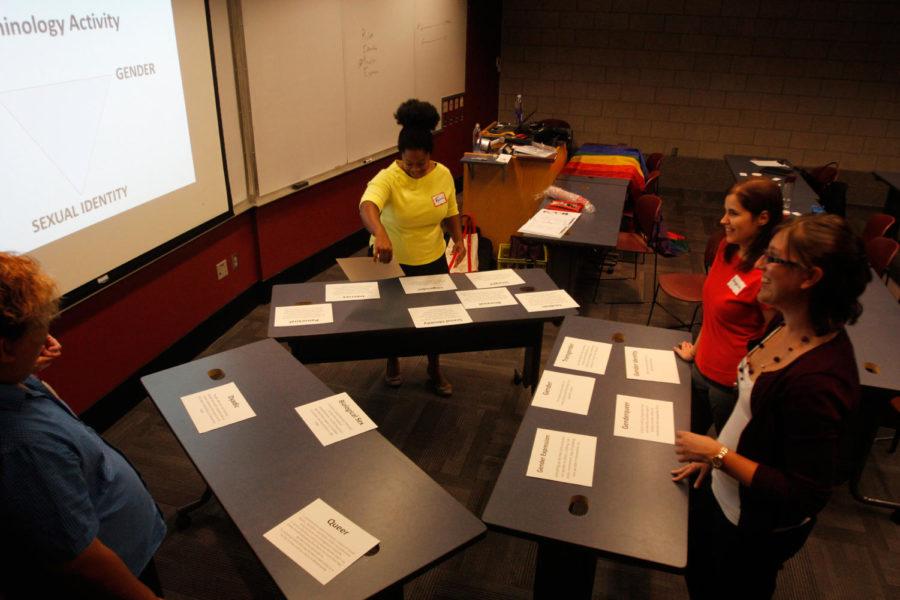Faculty, staff learn how to respond to LGBT students’ challenges
After a discussion at Safe Zone 101 training, Harrison Inefuku, Theressa Cooper, Angela Garrison and Maddie Schneider participate in an activity. Safe Zone 101 is designed to teach faculty and staff how to deal with situations LGBT students may face. People who complete Safe Zone 101 are given a placard to put in front of their office so students can know their office is a safe place.
October 4, 2013
Biological sex, gender and sexuality. Students in the LGBT community are affected by all three daily.
In order to create a open environment for students who identify as LGBT, Safe Zone 101 trains faculty and staff members on how to respond to situations these students might face.
A placard that reads “Safe Zone” is given to those who complete Safe Zone 101. Students who see the signs will be able to know that the staff or faculty member has been through training, and their office is a place where they are safe to talk about problems they might be facing.
“Our students are looking for Safe Zone stickers,” said Brad Freihoefer, coordinator of the Office of LGBT Student Services. Freihoefer told the training audience that he wants them to be empowered to help create massive change across campus.
More than 100 faculty and staff members took Safe Zone 101 last year, Freihoefer said. Last year the sessions were co-led by Freihoefer and Kelly Leonard, but Leonard became a systems analyst for the Dean of Students office this year.
Freihoefer trained a group of four people on Wednesday, Oct. 2, in Howe Hall. Most of the training was conversational with Freihoefer acting as a guide. He asked the attendees to list things they knew about biological sex, gender and sexuality, and wrote those ideas on the whiteboard for discussion.
Society tends to put people into a binary system of male or female when they are born, but biologically there is a spectrum between the two, called intersex, Freihoefer said. Intersex people have characteristics of both male and female. The Intersex Society of North America’s website, www.isna.org, has details on intersex persons.
Gender is the societal expectations put on people based on their biological sex, Freihoefer said. Gender and gender expression also falls along a spectrum as opposed to the binaries that society tries to put people in.
Safe Zone 101 tries to educate people about the different identities people have that fall along the spectrums. Freihoefer gave the attendees an exercise where he asked them to decide if terms LGBT students identify with fell into the category of biological sex, gender or sexuality.
“We are seeing less of binary boxes and more of spectrums,” Freihoefer said.
Maddie Schneider, counseling intern said Safe Zone 101 is definitely worth the three hours.
Angela Garrison, counseling intern said she did Safe Zone 101 because she thinks it is important to create a safe space for LGBT students on campus.
During the second half of the training, Freihoefer led the trainees through six scenarios that either ISU students or students who attend similarly sized schools have faced.
“I wanted more knowledge to be able to help them,” Garrison said. The training gave her good ideas on how to help LGBT students and pointed out the complexity of the problems they face, Garrison said.
Schneider said the training helped her be aware of resources for LGBT students.
“Your colleagues are going to see it when you put your placard up, and we hope that opens dialogue,” Freihoefer said.

















